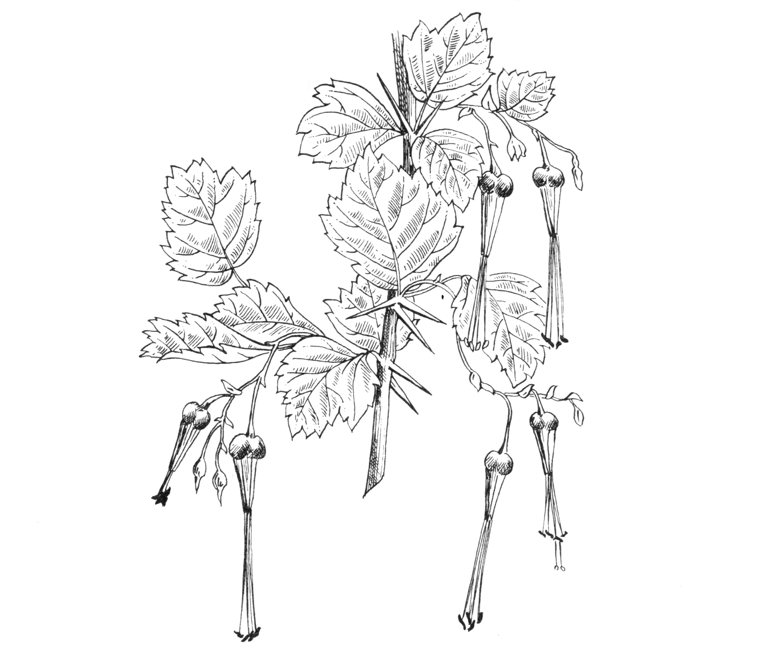A deciduous spiny shrub 6 to 12 ft high, the young shoots furnished with gland-tipped bristles. Leaves three- sometimes five-lobed, sparsely toothed, and from 3⁄4 to 11⁄4 in. long and wide, with smaller ones often obovate and tapered at the base; usually quite glabrous; stalk slender, scarcely as long as the blade, with a few glandular bristles, especially at the base. Flowers rich red, usually two to five in pendulous clusters, the main-stalk longer and less glandular than the minor ones. Receptacle 1⁄2 in. long, glandular; sepals four, not reflexed; petals four, about as long as the sepals; stamens four, red, standing out 3⁄4 in. beyond the receptacle. Fruits glandular-bristly, red, 1⁄2 in. long, sometimes seen in this country. Bot. Mag., t. 3530.
Native of California; discovered by Menzies about 1793, and introduced from Monterey by a naval surgeon named Collie in 1828. As a flowering shrub it is the most beautiful of the gooseberries. Its young shoots are reddish, horizontal, or slightly dependent, and from their underside the richly coloured, fuchsia-like blossoms hang profusely in rows during April and May. It is very distinct in the parts of the flower being in fours (not the usual fives), and in the very long highly coloured stamens. It is one of the earliest shrubs to break into leaf – often in early February. It shows to best advantage perhaps against a wall, where it will grow 10 or 12 ft high, but is quite hardy in the open at Kew, where it has grown 6 or 7 ft high. It can be rooted from cuttings, but does not strike readily; layering is a more certain process.


